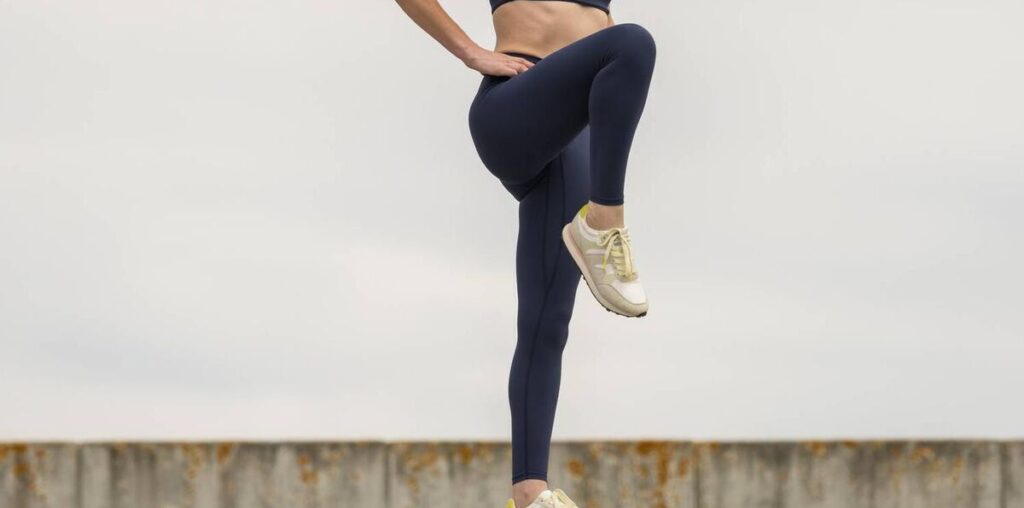
Our more sedentary lifestyles are affecting our balance and there are health consequences.
Falls are the second-biggest cause of accidental deaths, after road-traffic incidents, the World Health Organisation reports.
Falls, which are a failure of balance, are also the leading cause of death in the over-65s.
The length of time we can stand on one leg is a more telling measure of ageing than muscle strength or gait.
A new study published in PLOS ONE describes how good balance, muscle strength, and an efficient gait contribute to people’s independence and wellbeing as they age.
Forty healthy, independent people over 50 underwent balance, gait, grip-strength, and knee-strength tests.
Half of the participants were under 65, and the other half were 65 and older.
Participants were asked to hold their balance for up to 30 seconds in different situations: on both feet with eyes open, on both feet with eyes closed, on the non-dominant leg with eyes open, and on the dominant leg with eyes open.
Although the study was limited by its small sample size, it produced some interesting results: The duration that a person can stand on a single leg declined at the rate of 2.2 seconds per decade in the non-dominant leg and at the rate of 1.7 seconds per decade in the dominant leg. Balance was found to be a better predictor of ageing than either grip or knee strength.
There was no difference in the rate of decline in balance, strength, or gait tests between the sexes, suggesting that male and female participants were equally affected by age.
Prof Kenton Kaufman, director of the Motion Analysis Laboratory at the Mayo Clinic and the lead author, emphasised the importance of balance, in addition to muscle strength.
“Changes in balance are noteworthy,” Kaufman said. “If you have poor balance, you’re at risk of falling, whether or not you’re moving.
“Falls are a severe health risk, with serious consequences. If you can’t stand on your leg for five seconds, you’re at risk of falls. If a person can stand on their leg for 30 seconds, they’re doing really well, especially if they’re older.”
The good news is that balance can be maintained and improved. The corollary is that you lose the ability if you don’t practise.
“If you don’t use it, you lose it. If you use it, you maintain it,” Kaufman said, adding that practising to balance is easy.
Standing on one leg in the kitchen, for instance, doesn’t require special equipment, and it’s easy to do every day. (The HSE offers advice on balance exercises for older people on its website: exa.mn/Active-And-Flexible.)
Substantial evidence confirms that the loss of balance is connected to the risk of chronic disease.
A paper published in Stroke (2014) reported that an inability to balance on one leg is linked to a greater risk of stroke and poorer performance in tests of mental decline — suggesting a link with dementia.
A study published in the British Journal of Sports Medicine (2022) found that an inability to stand on one leg for 10 seconds in later life is linked to a near doubling in the risk of death from any cause.
Lead author Dr Claudio Gil Araujo, of the Clinimex exercise clinic in Rio de Janeiro, recommended that balance tests be included as part of routine health checks.
These include tests such as standing on one leg and trying to hold the position for 20-30 seconds.
Another test involves placing the right foot directly in front of the left foot, heel to toe, and trying to hold this position for 20-30 seconds. This is followed by changing feet, left in front of right.
Before his tragic death earlier this year, BBC journalist Dr Michael Mosley advocated that health professionals advise patients to practice balancing on one foot to maintain co-ordination and prevent falls.
“When you attempt the one-leg balance, your brain is performing a remarkable amount of co-ordination,” Mosley wrote in Just One Thing.
“It integrates signals coming from fluid in your inner ears, visual cues from eyes, and even feedback from your joints and muscles.”
As we age, the number of hair cells and rate of blood flow in the inner ear decreases, affecting our balance.
But there are still things we can do to overcome this inevitable decline.
Where once we spent much of the day moving about, now many of us sit staring at computer screens.
While the evidence for the link between specific types of exercise and improved balance is limited, a systematic review published in the Journal of Geriatric Physical Therapy (2010) found that Tai chi can improve balance in older adults.
Tai chi is a low-impact form of exercise that focuses on deliberate flowing motions and deep, slow breaths. It aims to concentrate and balance the body’s qi, or vital energy, and benefits physical and mental health. The women in the 2003 British comedy Calendar Girls advocated the practice.
You spend far more of your life in a one-leg stance than you could imagine.
The evidence shows that 40% of your walk is spent on one leg, so just walking is key to maintaining good balance.
Standing on one leg (be careful) while brushing your teeth or waiting for the kettle to boil is a great place to start.
- Dr Catherine Conlon is a public health doctor and former director of human health and nutrition, safefood

